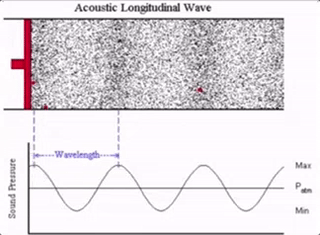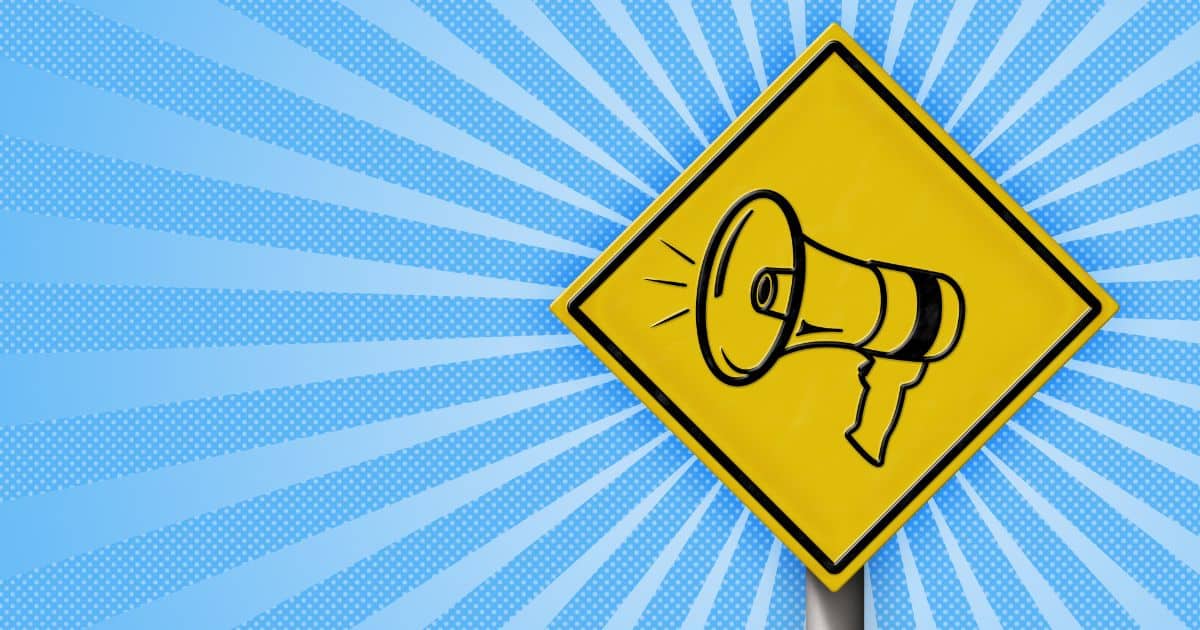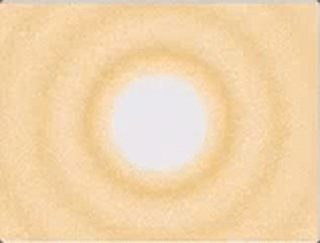The answer is yes – there is an upper limit to sound. But this depends on how sound is identified and this article relates to sound in air.
Sound in Air
Sound is a series of longitudinal waves travelling in air caused by oscillations of pressure in the air (Figure 1). Sound consists of a pressure wave, having regions of high pressure followed by low pressure, and repeats. The piston (left in red) moves back and forth, alternately compressing and rarefying the air. If one could see the individual particles of air (tiny black dots), the darker areas show the particles as being denser (higher pressure) than the surrounding air. The three red dots mark individual air particles, showing that they themselves do not move very far as the wave passes through, instead, bobbing back and forth. It is the acoustic energy of the wave that moves from one end of the cylinder to the other.

Figure 1. Animation of a traveling wave showing regions of high pressure (air molecules closer together (compression) followed by regions of low pressure (air molecules farther apart (rarefaction). Animation adapted from Sound Waves, Institute of Sound and Vibration Research (ISVR), University of Southampton, UK.
However, in free air, a sound wave does not move in just one direction, but propagates in all directions (Figure 2).
Maximum Sound Level in Air
On Earth, while an arbitrarily high pressure can be created, the low pressure zone cannot be lower than vacuum. This limits the size of the oscillations of air pressure, presenting a natural limit to how loud a (sustained) sound can get. The reason is that the rarefaction pressure of the air cannot drop below this vacuum. Because of this, the loudest (sustained) sound possible is a pressure wave oscillating between vacuum and +2 atmospheres (1 atmosphere is standard sea-level pressure). Multiple sources identify this level at 194 dB SPL peak re 20 µPa. This level has a sound pressure deviation of 101.325 kPa, which is ambient pressure at sea level and 0 degrees C. Sources state that at high levels the sound waves create vacuums between themselves, and no higher amplitude is possible. For “sounds” greater than 194 dB, the extra energy begins to distort the entire wave, and anything louder is more like a blast wave with a substantial region of near-vacuum behind it. These consist primarily of impacts and explosions.
On Earth, the maximum loudness of a sustained sound is limited by the inability to create a lower pressure zone than vacuum. The loudest possible sustained sound oscillates between vacuum and +2 atmospheres, reaching a peak sound pressure level of 194 dB SPL. Beyond this level, the energy of the sound begins to distort the wave, resembling a blast wave rather than a conventional sound wave.
Maximum Sound Can Be Louder in Other Mediums
It is believed that 194 dB is the loudest sound in air (without distortion), but not when measured in a different medium. For example, 194 dB isn’t even close to the maximum dynamic pressure in water where a different reference is used, and also because the ambient pressure is much higher and referenced to 1 µPa. As reported previously on this site, the sperm whale’s communicative clicks have been measured at 230 dB2, and the snapping shrimp’s claw shock wave has been measured at 218 dB, capable of killing smaller, and stunning larger fish3.
Shock Waves
As mentioned previously, shock waves exist that exceed 2 atmospheres, and as a result have a higher dB level than 194 dB, but not as a sustained sound. Such shock and impact sound levels are usually very violent and were reported previously. The extra energy begins to severely distort the entire wave, rendering it other than traditional undistorted sound waves.
References
- Winer, Ethan (2013). “1”. The Audio Expert. New York and London: Focal Press. ISBN978-0-240-82100-9.
- Davies, E. There are many ways to measure loudness, so the loudest animal on Earth may not be what you expect. Earth. https://www.bbc.com/earth/story/20160331-the-worlds-loudest-animal-might-surprise-you.
- Burton, M. and Burton, R. (1970). The International Wildlife Encyclopedia, Vol. 1, Marshall Cavendish, p. 2366.







